MONROWE is pleased to present a portfolio from Peter Lindbergh’s campaign for the New York City Ballet’s 2016/17 season. Thanks to the New York City Ballet, which published an earlier version of this interview.
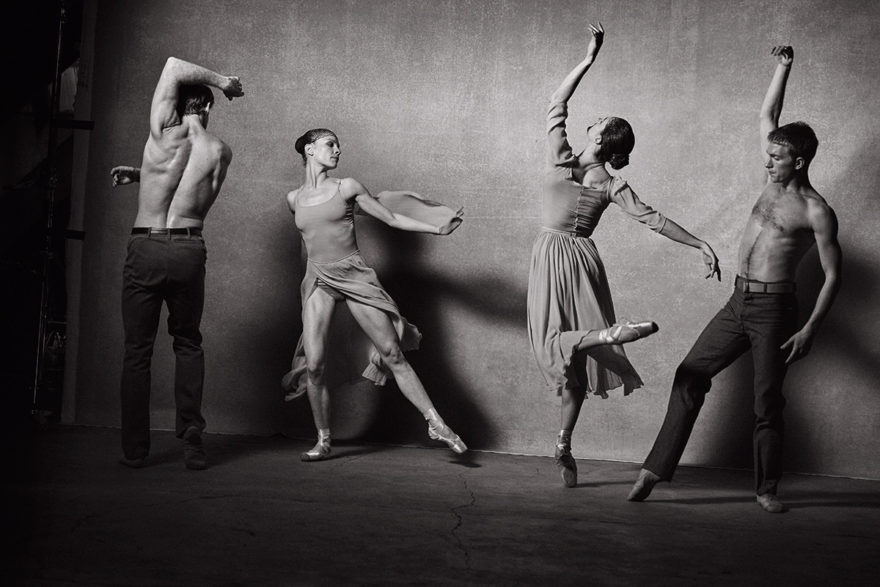 Adrian Danchig-Waring, Lauren King, Megan LeCrone, Harrison Ball
Adrian Danchig-Waring, Lauren King, Megan LeCrone, Harrison Ball
It is now after midnight in Paris. Peter Lindbergh the photographer and I have been talking for much of the day. He is home. I am in New York. We’ve discussed his early interest in becoming a conceptual artist (and making “big” paintings before that). Silent German cinema and Berlin cabaret have been topics of conversation too. We see one another on Skype. Behind him is a school clock, a window, and more art books than can be imagined.
For my part, I have been trying to ascertain what influence dance has exerted on his work. The poise of arms and hands. The way a back is arched or a leg is extended. Poses where every muscle seems tensed ready for a leap. I ask about Naomi Campbell’s complaint that Lindbergh made her wear ballet toe shoes and stand en pointe for their first fashion shoot at the start of her career. And I even suggest – after seeing film footage of Lindbergh showing fashion models what he’d like them to do in a series of steps, waving his arms, shifting his hips and tossing back his head –that he goes about his work in exactly the way that a ballet choreographer constructs a dance. He laughs. After a long pause, he explains that’s not it. What’s important is for him to feel for himself exactly what and how his subject feels.
For the better part of 40 years Lindbergh has been regarded as one of photography’s masters. An artist of shadow and available light, his fashion stories and portraits of actors and musicians have regularly appeared in all the world’s top magazines, been published as books, shown at art galleries—and increasingly, become the subject of retrospectives at major art museums.
His approach, he explains (notwithstanding his patrons’ earnest commercial motives), has never been about the clothes, the location, or even “the architecture” of a face, but very much focused on “the relationship” that is created between the photographer and his subject on one particular occasion: “You do not photograph the person—you photograph the moment.” Often praised as poetic or “dance like,” his images are black & white (with rare exceptions), wholly uncropped, and – at least when he’s gotten his way – unretouched. Moreover, the relationship depicted by Lindbergh is invariably one of equals enjoying a wholly unqualified and unconditional sense of mutual trust.
Lindbergh is modest about the occasions he has photographed the ballet – including his portfolio for the New York City Ballet’s 2017 season – contending he “prefers imperfection to perfection,” adding that while he loves dance, there are so many ballet photographers who can see the moment when a dancer is technically impeccable. “I don’t care if the foot is like this or like this,” Lindbergh tells me, gesturing with his hand, “I’m okay with more twisted or less twisted.” What Lindbergh seeks and has always responded to is the “energy” of dance. Its capacity for the poetic. And, as his October shoot of the NYCB radiantly attests, he was also particularly inspired by both the improvisational inventiveness of the company and the remarkably beautiful natural light in the stable house in which he took their portraits.
There is too, it becomes clear in our conversation, Lindbergh’s remarkable capacity to empathize with dancers about matters both practical and philosophical, like their singular dedication to the ideal that the show must go on. However, it clearly pains him that so much preparation and diligent work goes into a live performance that vanishes. “God, it must be so frustrating,” he recalls saying to one dancer, “you do all this work, no? And then…it just passes.”
As for working out of doors – at the mercy of weather and inexorable march toward darkness on autumn afternoons– he explains, “you need to leave a space for things to happen.” And also to “preserve the possibility you will discover something very different from what you thought.”
At a deeper level, though, there is Lindbergh’s thirty-year friendship with Pina Bausch—among Lindbergh’s closest friends until her death in 2009. Describing Bausch’s work as a dancer herself in Cafe Müller (in one of the only roles she continued to perform, rather than pass on), I watch Lindbergh’s face light up as he describes how she “hardly did anything.” But that “not one movement was empty.” That “every gesture” had come from something in her experience, and how masterful she was at imagining something of consequence she wanted to say, and doing so with her body.
“One hand would come up,” Lindbergh tells me, very slowly moving his own arm a few inches “and you’d die.”
It is now past one a.m. Lindbergh will be heading to Los Angeles the next day. And I think of something he once told an interviewer about his shooting schedules always being so tight you couldn’t move the dates, and how it had forced him to learn to be “quick and flexible” because there is no tomorrow or day after. I suggest that George Balanchine, NYCB’s founder, would have completely understood how this contributed to the remarkable immediacy of Lindbergh’s work. And quite possibly, even seen Lindbergh as a kindred spirit. On one occasion—now ballet legend—clearly frustrated with how even the company’s best dancers tended instinctively to “hold back” as if “saving” themselves for “another time,” Balanchine had obviously had it. “There are no other times,” Balanchine told the dancers. “There is only now. Right now!”
 Mimi Staker
Mimi Staker
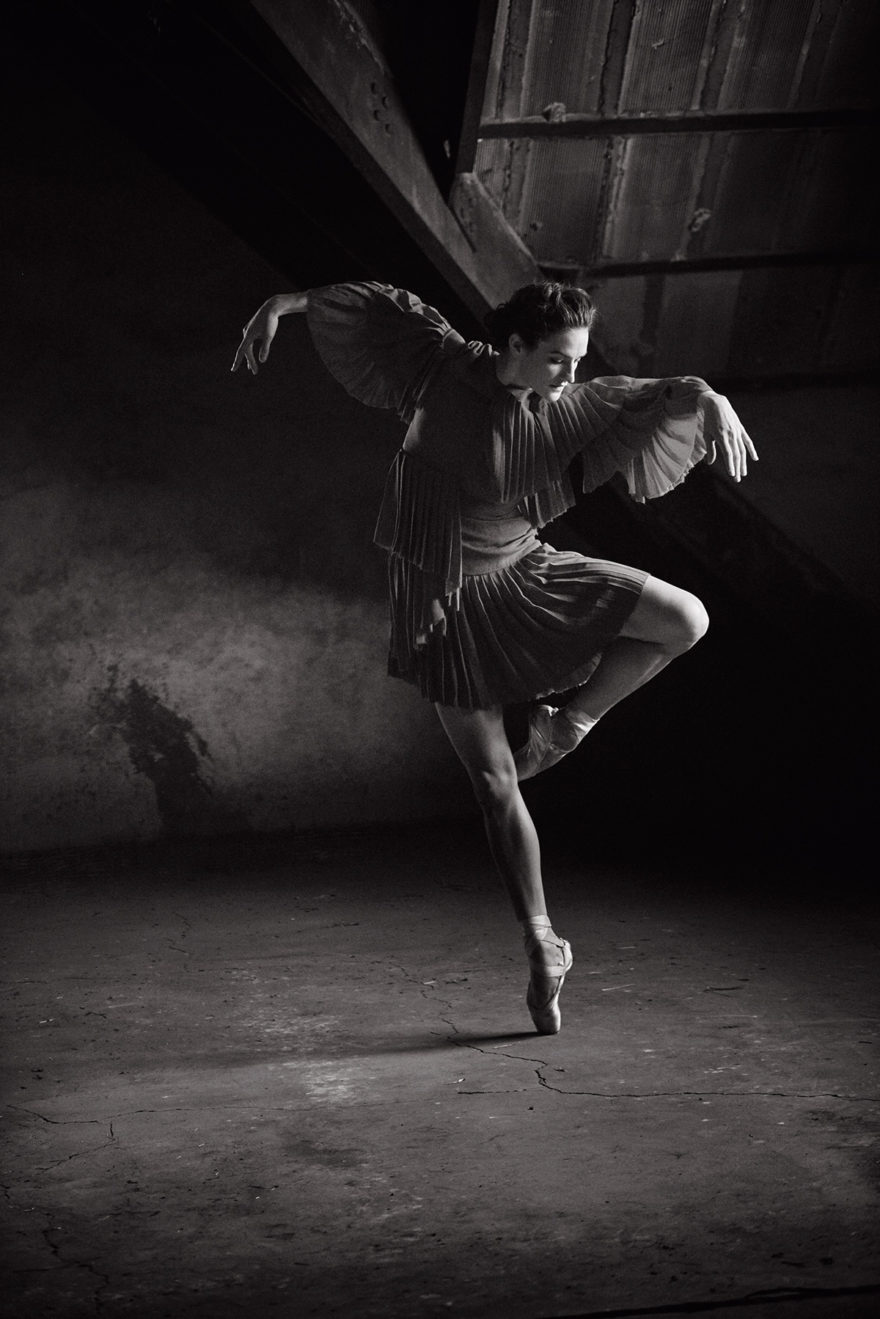 Megan LeCrone
Megan LeCrone
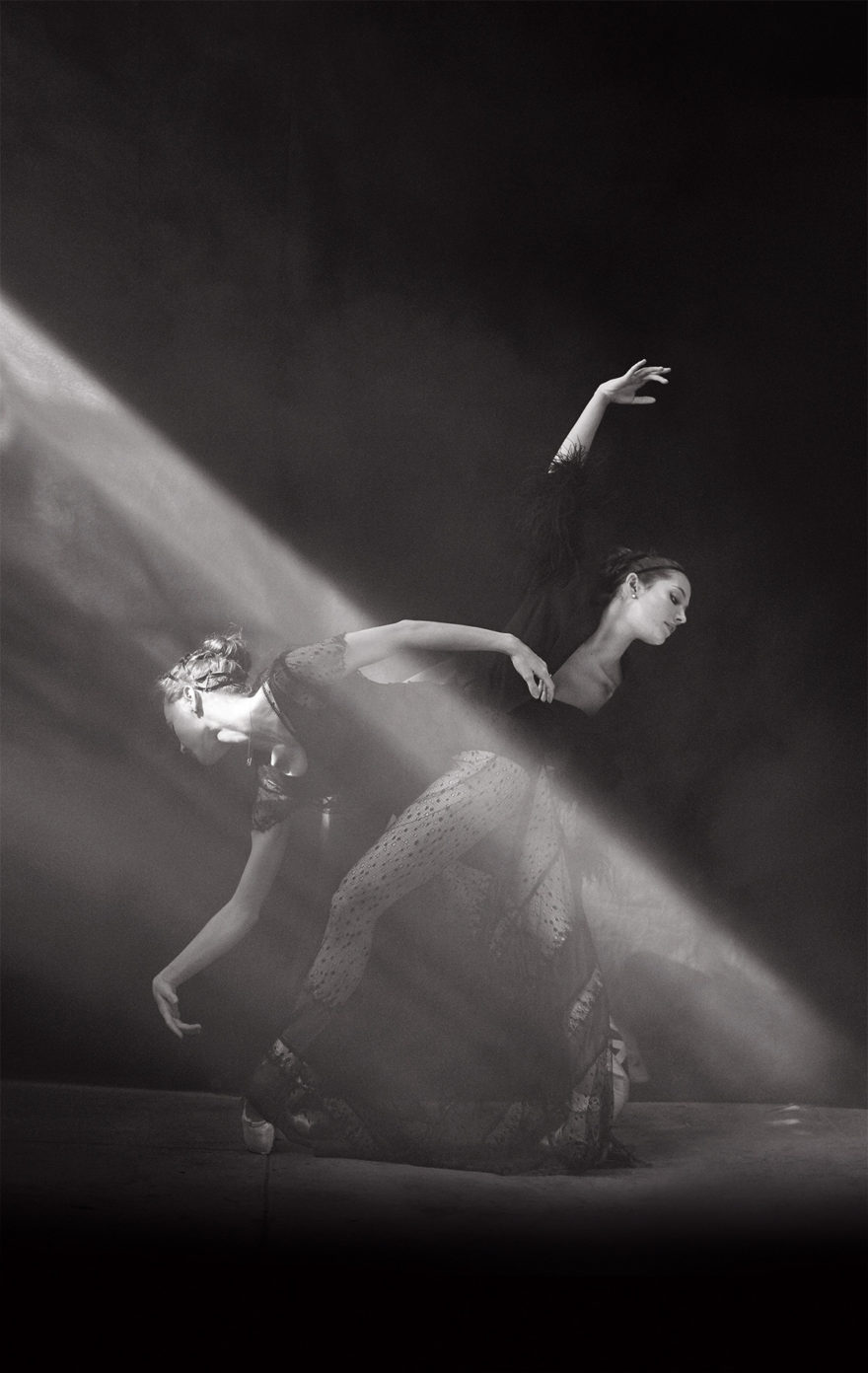 Emile Gerrity, Unity Phelan
Emile Gerrity, Unity Phelan
 Rebecca Krohn
Rebecca Krohn
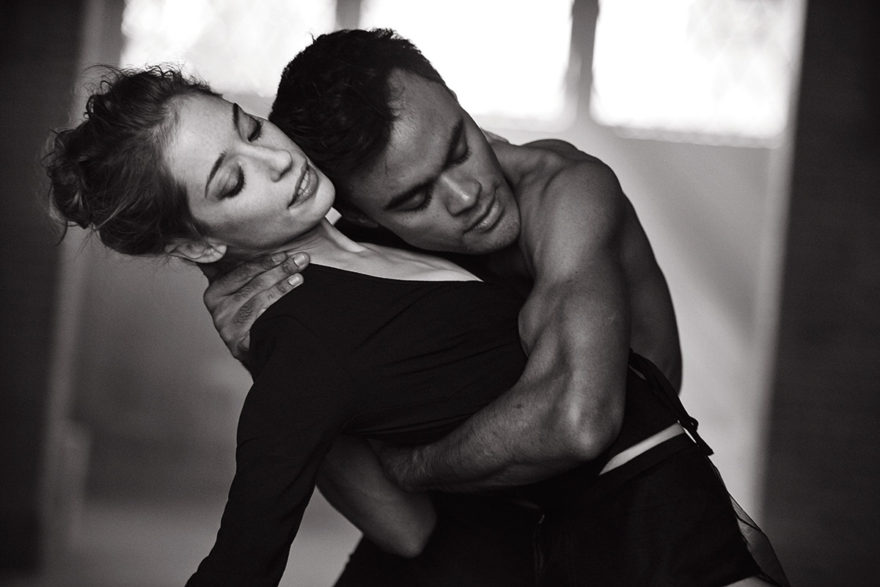 Rebecca Krohn, Taylor Stanley
Rebecca Krohn, Taylor Stanley
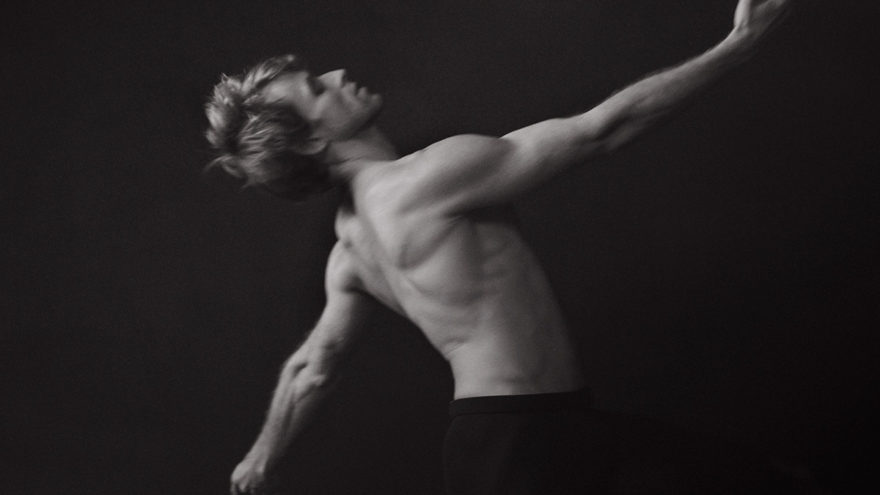 Adrian Danchig-Waring
Adrian Danchig-Waring
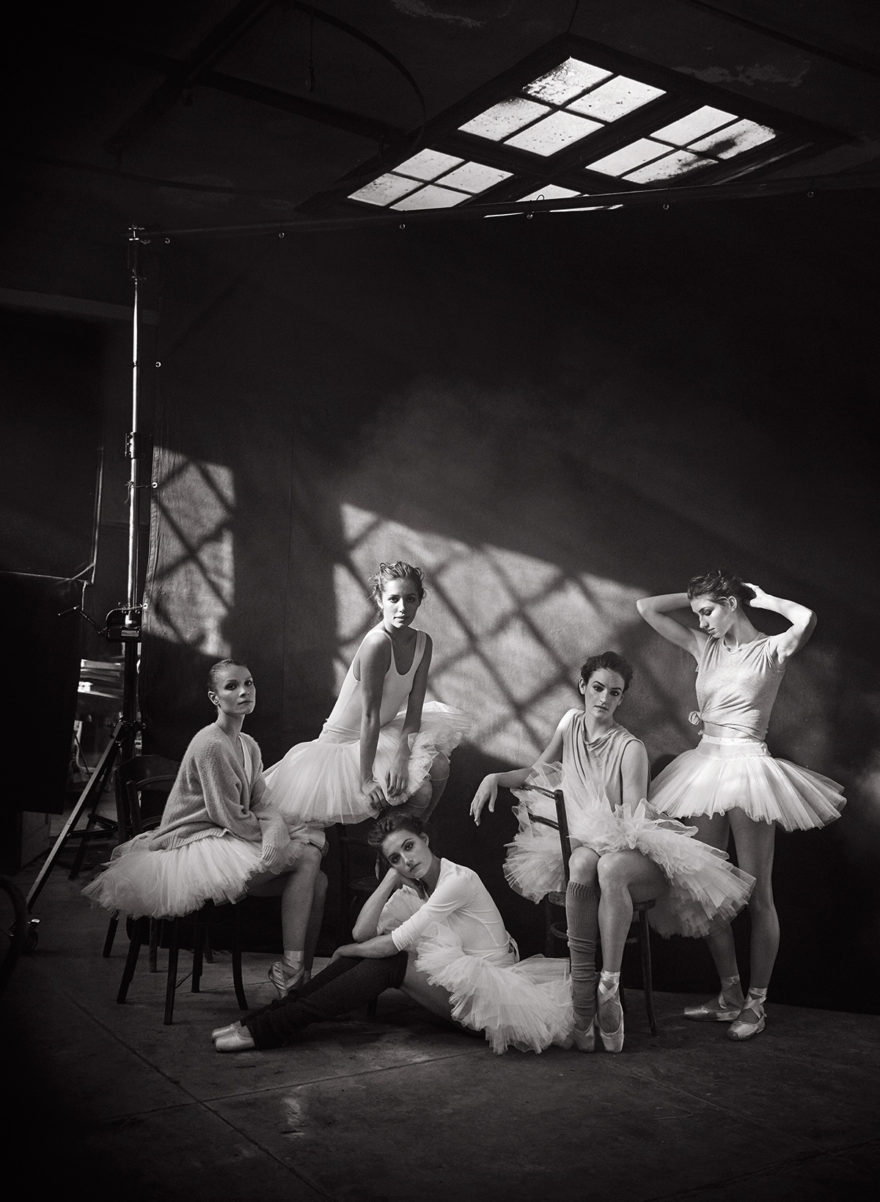 Lauren King, Unity Phelan, Mimi Staker, Megan LeCrone, Lexi Maxwell
Lauren King, Unity Phelan, Mimi Staker, Megan LeCrone, Lexi Maxwell
Credits
Photography: Peter Lindbergh @ 2b Management
Style: Julia Von Bohem @ Tim Howard Management
Hair: Odile Gilbert @ Exposure NY
Makeup: Stephane Marais
Set Design: Colin Donahue
Production: ro.
Executive Producer: Ros Okusanya @ ro.
Producer: Steve Hong @ Pier59 Korea
Featuring: Adrian Danchig-Waring, Lauren King, Unity Phelan, Harrison Ball, Mimi Staker, Megan LeCrone, Lexi Maxwell, Rebecca Krohn, Taylor Stanley